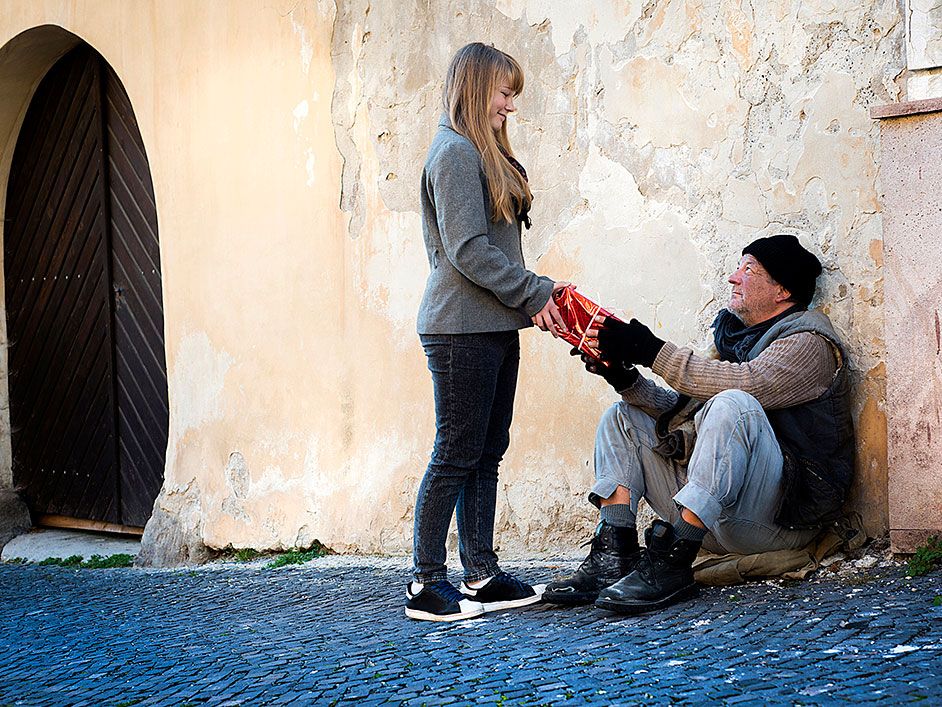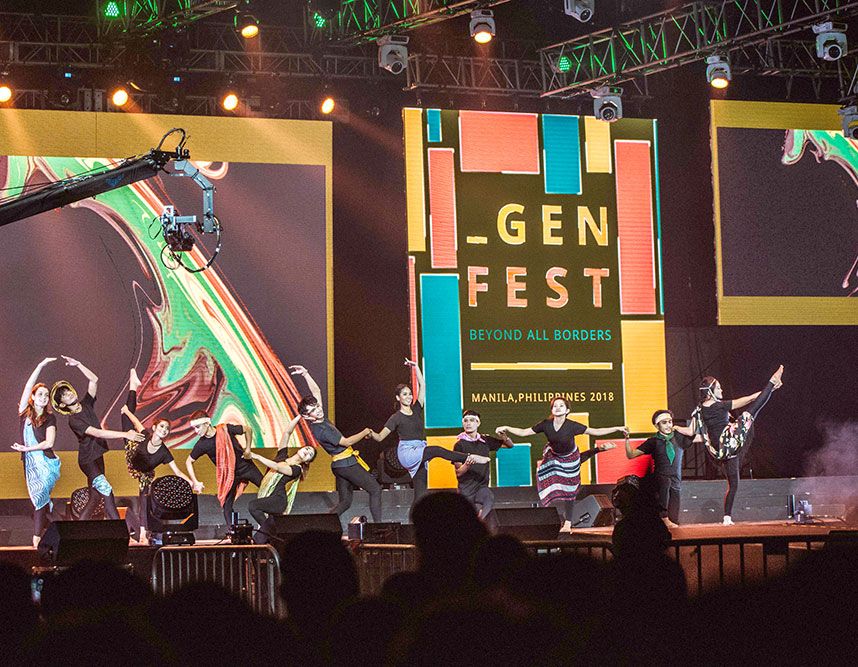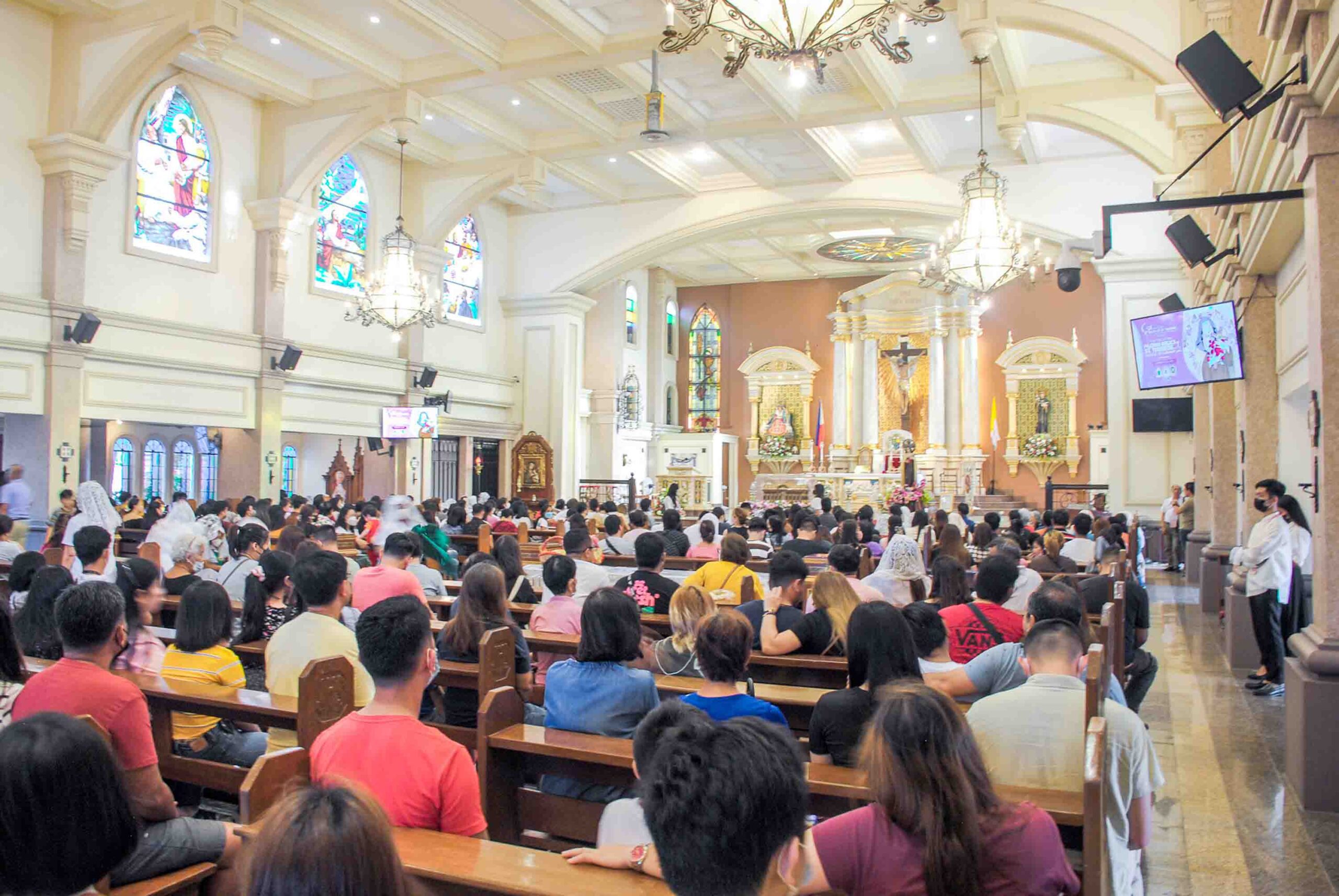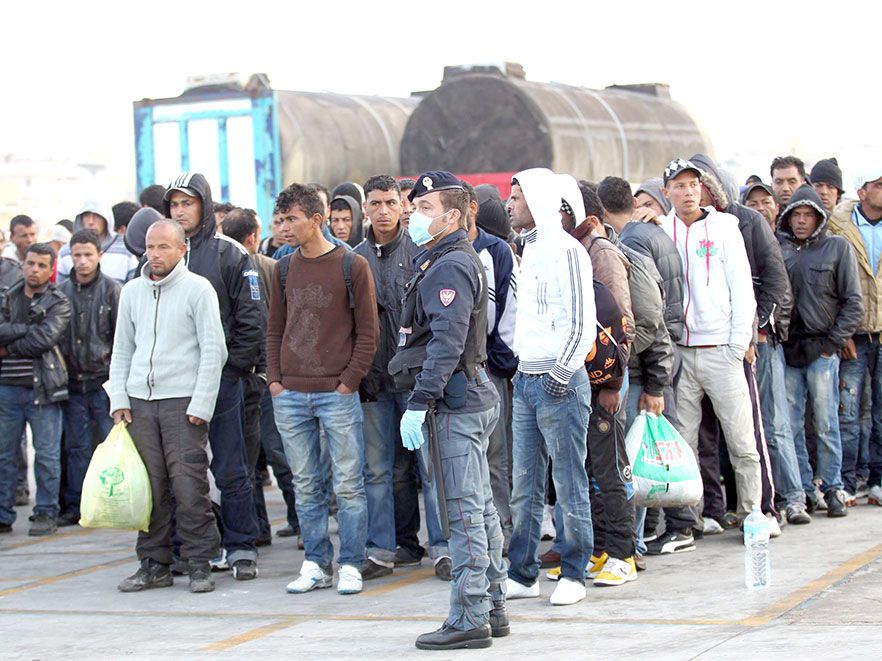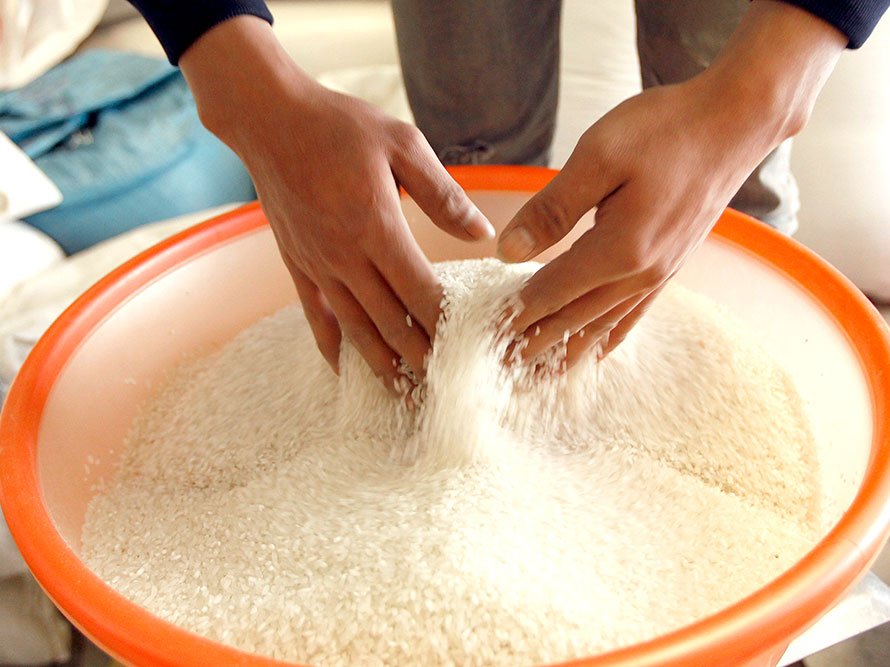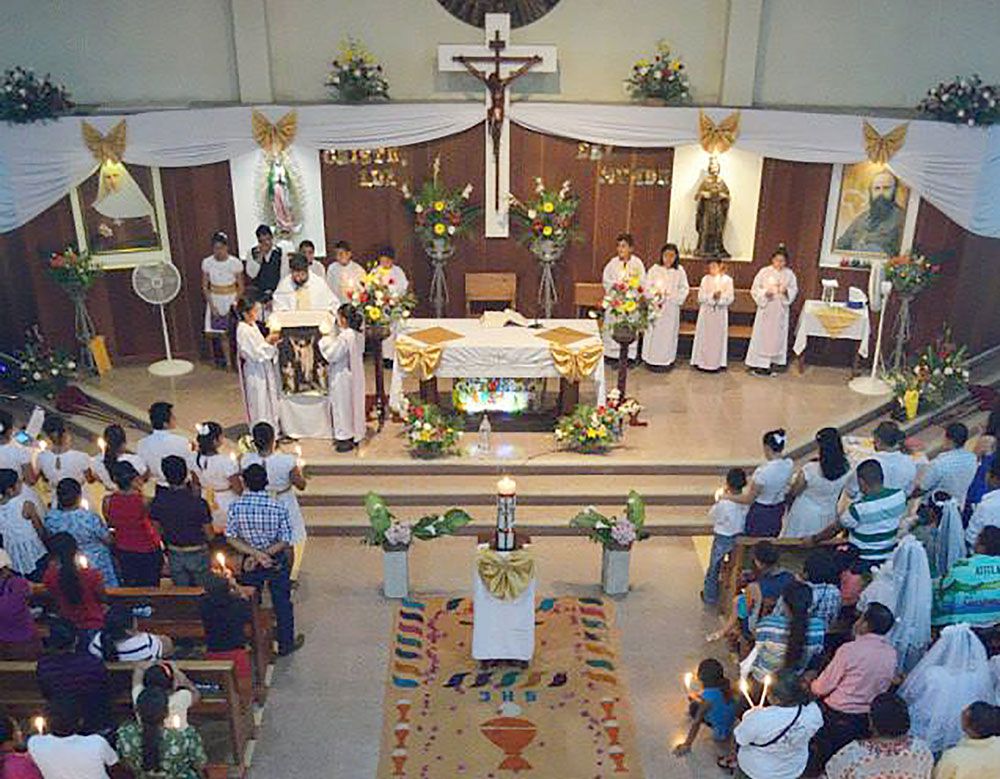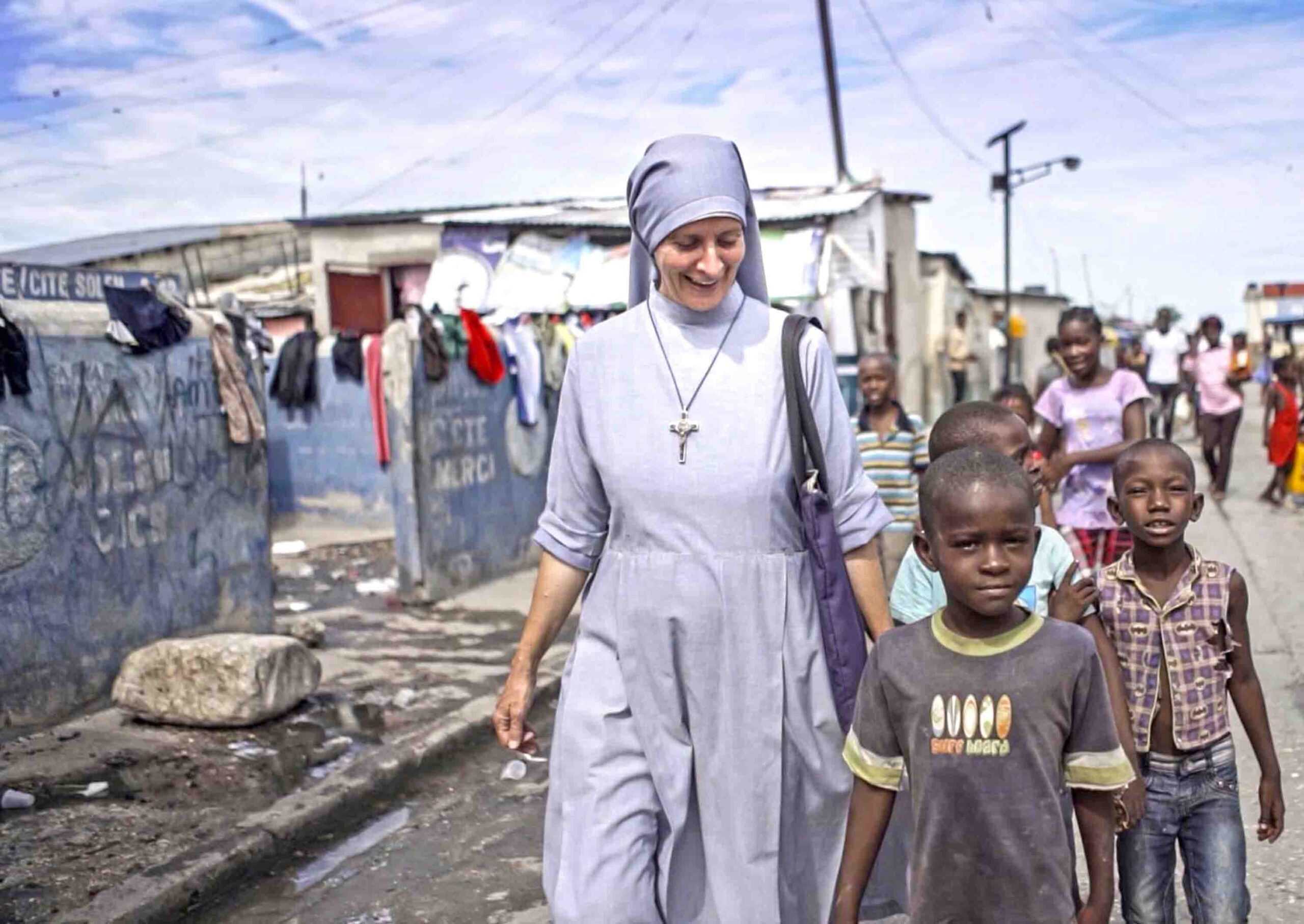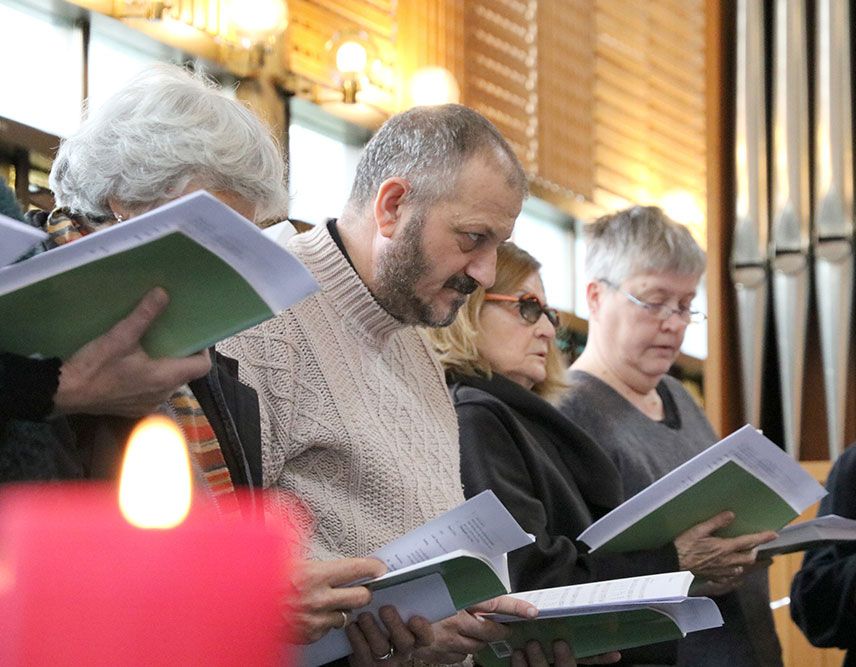Early Sri Lankan chronicles bear evidence that much before Arab seafarers were driven by stormy winds to this tropical isle which they fondly referred to as “Serendip,” or European navigators discovered Ptolemy’s “Isle of Ceylon” (1500s), learned scholars from the Orient had frequented the land of the Sinhalese to further their study of the Buddhist doctrine. (A recent mural painting at the Katunayake International Airport depicts the scene from the legendary arrival of Prince Vijaya and his team to whom the Sinhalese trace their origin – picture on far right.)
Sri Lanka today is a predominantly Sinhala-Buddhist state. But since past ages, the land of the Sinhalese has attracted and unified together a varied mixture of Christians, Hindus and Muslims whose descendants today comprise over 30% of the country’s total population. In spite of the dramatic recent civil disturbances – primarily caused for advancing political supremacy – all of the nation’s ethnic peace-loving communities, i.e. Burghers (descendants of European colonists), Moors, Sinhalese, and the country’s second largest community of Tamils, are now trying to thrive harmoniously side-by-side as has been for hundreds of centuries ago. Their present mixed generations manifest a bold blend of the diversity and richness from the cultures, traditions and religious beliefs that their ancestors have proudly upheld in spite of the nearly five hundred and fifty years of domination by European colonial powers, viz. Portuguese, Dutch and British.
A rice culture
Apart from the Muslim traders and the communities of Tamil marine fishers who settled along the coastal belt, the native Sinhalese (whose language is Sinhala) have given much importance to irrigation, rice farming and community-based agriculture since very ancient time. Thanks essentially to the wise and tolerant reign of early Sinhalese kings, Sri Lanka gained fame as “the Granary of the East.” Even the twelve months were aptly named to capture and reflect not merely the essence of a season’s idealistic charm but to identify each month distinctly and differently from the other. December, for example, in the Sinhala lunar calendar was named “Unduwap.” In later years, with Christian conversions following the arrival of the Portuguese (1505), the twelfth month became popularly christened by the Sinhalese as “Nattal mase,” literally meaning the month of Christmas.
(Initial converts to Christianity included both the Sinhalese and the Tamils. Though a majority of the Sinhalese are Buddhists, and many Tamils are Hindu, a prominent characteristic that continues to bind the two converted communities together is their common Christian faith. Alas, the same cannot be said of either of these two communities whose Buddhist or Hindu members even rarely accept to follow the religion of the other.)
“Nattal” in Sri Lanka ushers in a festive season, traditionally celebrated throughout the island. People look forward to this year-end festival. Christians use the season to observe and spread the wonderful message of Christmas: sharing with their poorest neighbors and spreading the message of goodwill and peace among all. For children, it means the end of school, completion of terminal examinations and the accompanying rewards to those who have been promoted to a higher class the coming year. Batches of junior choristers or child actors, trained by their teachers, would have already performed in school year-end concerts, centered on the significance of Christmas. Greater excitement and enthusiasm prevails among elder churchgoers and youth groups at village parish communities.
Christmas carols
In the city, choral groups, belonging to diverse creeds and denominations, serving either the private or the public sector, begin to rehearse their international medley of popular Christmas carols from about the beginning of December. Theatrical pageants and choral concerts are held at college hall, auditoriums, or in the open-air esplanades in church compounds for about a fortnight before Christmas Day. Sometimes, they are accompanied by orchestras of the national security forces belonging to the nation’s Army, Navy or Police Band teams. On Christmas Eve, choral groups visit homes in the cities and urban neighborhoods to sing their favorite Christmas carols which sometimes last until the following dawn.
Street thoroughfares and shops overflow with people buying beverages, cakes, clothing, gift packs, shoes, electronic gadgets and toys for children. At country bazaars and village fairs, vendors from neighboring districts hurriedly gather at makeshift stalls to hawk a wide range of wares, especially farmer families who have just reaped and sold their bumper stocks. Merchandise is fancifully displayed as though to pamper and cater to the fascination of young village girls and children drawn from the rural interior. From colorful anklets, bangles, bracelets, brooches, clothing, fabrics, sarees, shawls, carpets, mats, and home-made delicacies such as marmalades, pickles, savories, sweetmeats, to household items of aluminum, pottery, furniture and even delicately handcrafted jewelry with precious stones.
To glorify nature
The festive cheer accompanying “Nattal” prevails until New Year, thus penetrating the inner countryside, awakening a permeating sense of joy and goodwill among peace-loving people of all ages and social status. Even the mid-noon breeze which is usually warm, at this time of the year softens to become caressing and refreshing. Flowers of diverse hues, style and fragrance deck the surrounding alleys, boulevards, game parks and adorn treetops with grace as though to match up with that of the unending clusters of manel, nelum and olu lying serenely upon ponds and lakes. All this helps to enhance and enrich the natural beauty of the undulating tropical greenery that extends from the coastal belt to the hilly elevations occupied by coconut, rubber and luscious tea plantations mainly located in the Central Province and which made Ceylon Tea world famous.
Out in the open expanse of rice paddy fields, men and women farmers chant verses to invoke the gods while glorifying nature’s rewards. Yet, others seated on mini stools in competitive teams of five or seven join to play popular raban-pada (a traditional rendition of throbbing, rhythmic, prose played together on a circular hollow drum held up from the floor on four short ‘legs.’) Such poetic prose is created by the stylistic and coordinated use of the players’ fingers and palms beating rhythmically together upon the hollow drum.)
As dusk begins to diminish the glow of a setting sun, visiting groups of foreign tourists assemble to watch migrant bird flocks in their dazzling plumage that have flown here from over the distant oceans. They seek refuge within the national game sanctuaries set apart for the care and conservation of natural life and their cherished habitats.
Fake snow
Finally, preparing for the festive season and decorating the Christmas tree in one’s home are things children look forward to with immense excitement and anticipation. Pausing to recall from memory, I remember how, as children, we could not imagine a tree without snow. This early impression we had, cultured perhaps from the seasonal receipt of greeting cards from friends or relatives abroad, or purchased from imported stocks. Therefore, even the make-do Christmas tree we gaily decorate with strands of silver tinsel and shiny glass bells hung on dry twigs or bamboo slips (because the coniferous type was not easily accessible or affordable), appeared unrealistic unless they seemed to drip with wisps of cotton fluff hidden among the branches to look like snow.
The same atmosphere had to prevail upon and around our home-made crib which children still take delight in preparing for the Infant Jesus to be born precisely at midnight on Christmas Day. Looking back even now, I’m sure how the cotton fluff did indeed make a world of difference to transform our otherwise tropical Christmastide into a more realistic one. As did happen in most homes, where electricity was not available at the time, watching the tree brighten up on Christmas night to dazzle and glitter from the radiant glow of a simple candlelight would remain a dear memory.
In conclusion, dear World Mission readers, in this my feeble attempt, I have tried to recreate and transmit to you the tropical flavor of this exclusively joyous season as has been witnessed in Sri Lanka. I join my beloved people to heartily wish you all: “Saamayen piri Subha Nattalak Weva!” (Have a peace-filled, happy Christmas!)


